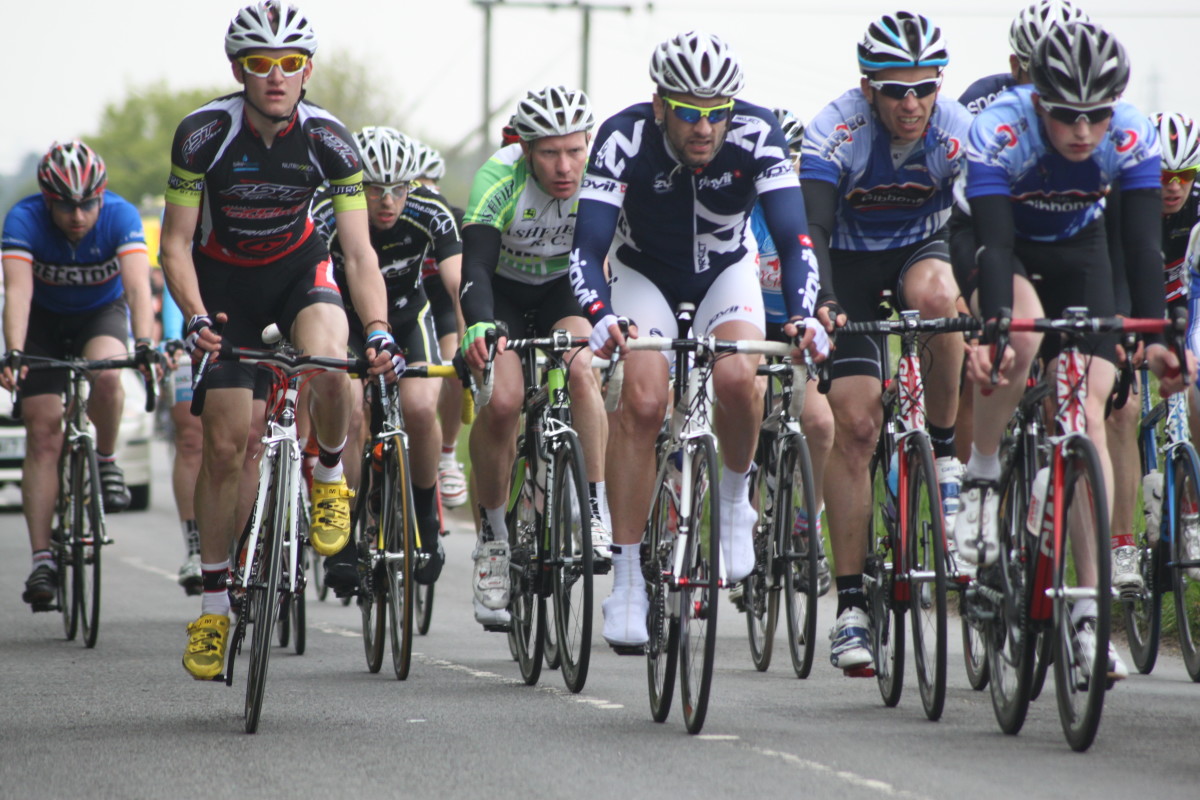Budget Dollar Store Cycling Computer
Cycling Computer Pictures
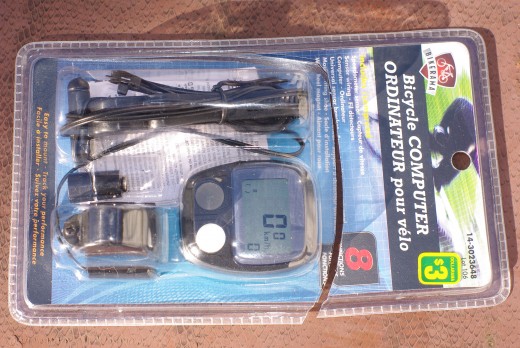
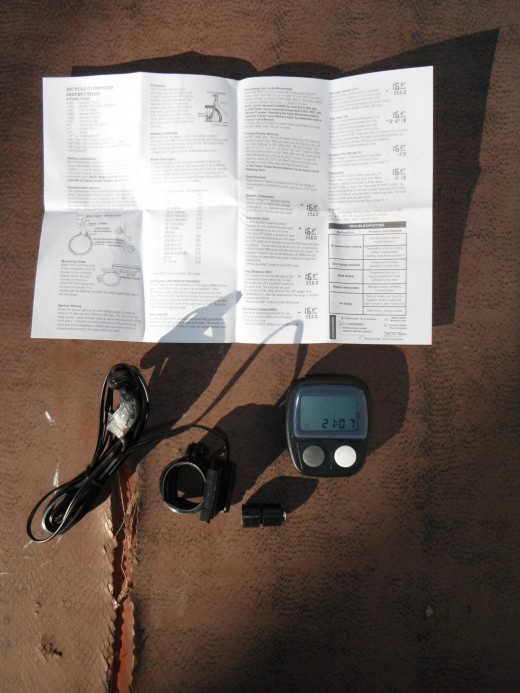
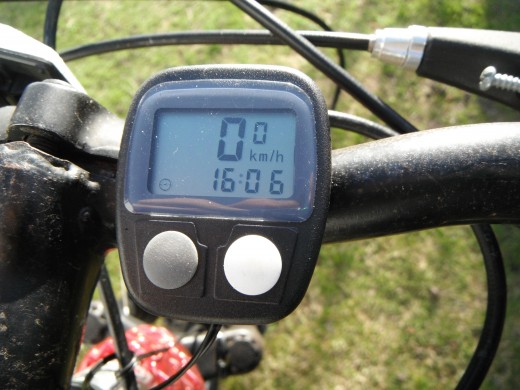
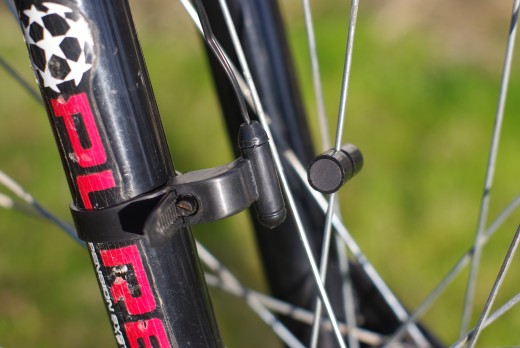
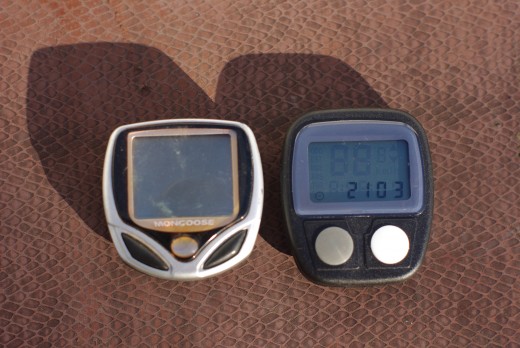
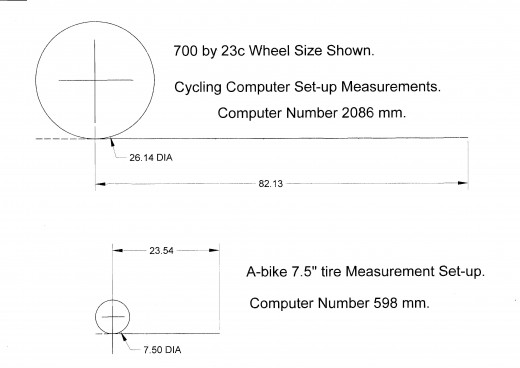
2013 Dollar Store Cycling Computer
By Steve Robson
There was a time when cycling gear was only at bike shops. Department stores also sold these items but the cost was still high. In recent years dollar stores have been introducing cycling related gear at low cost. This 8 function cycling was bought for only $3.00. I will look at how it compares higher priced cycling computers.
The kit comes with the normal equipment to mount the cycling computer to the bike. The fork mounting sensor uses a threaded strip to attach the mounting ring on to the fork. The spoke mounted magnet is mounted by a two piece plastic design and a screw holds o two parts in place. The computer slides nicely into handle bar mounting bracket. There is no fear of the computer section falling off the bike. The two main function buttons are different colours. Once on the bike, it is easy to go through the computers functions when riding on the road.
The computer has 8 functions. It has to normal speed, time, distance, odometer, trip distance and average speed. It also has a wheel rotation function. It tells the rotation speed of the bike as well. This can be used to help how well the rider is making use of the bike gears.
Once the device is mounted on to the bike, you will find that the timer does not automatically start when the starts to move. The rider needs to start it up if a timed run is needed. This contrasts to the Mongoose cycling computer where the timer comes on every time the bike starts up.
The build quality is ok but not too outstanding. It will be interesting to see long this unit will last in the long run.
Setting up the Computer
The instructions show various set-up numbers but fail to give the math for manually set the computers set-up number. The way to set it up is to first understand what the number is. It is the total amount of per wheel revolution. A three digit number indicates a measurement in cm’s. A four digit number indicates a measurement in mm’s. Take the diameter of the tire to be used to mm or cm, depending on the type of number being used on the computer set-up. Then multiply this by 3.1416. This gives you number needed to give an accurate distance and speed readings. Some manufacturers use the circumference of the tire at double diameter in order get the computer number.
If you are using multiple bikes using different computer designs, it would be great to set-up the different be running about the same readings. I ran into this spring because the older cycling computers batteries died and needed replacing. They all needed redoing there base set-up again.
Here is what I did to get the cycling computers set-up to run about the same. After measuring the different bikes tires, I setup the base number on the road bike ten higher then shown on the instruction sheet. The number put into the Mongoose cycling computer is 2086 rather than 2076. The three dollar Dallarama cycling computer used the instruction sheets indicated 204 cm number setting. After taking the two bikes on a short 1.4 km ride I checked out the differences in distances the indicated distance between the two bikes. There should really be no differences but in real life it is not possible to achieve this. The 2010 recycled mountain bike showed a distance of 1.4 km. This bike uses the three dollar budget cycling computer. The road bike uses the older Mongoose cycling computer. It showed a distance of 1.395 km. The road bike was with-in 99.6% o the newer budget cycling computer. This is good.
As expected, the road bike was the quicker of the two bikes on the test run. It was nice to see the recycled mountain bike feel nice and solid after much tuning since 2010. It will nice to see how well my 2013 cycling goes.

